You want to make your stainless steel nonstick, and you’re not sure how. Don’t worry; we’ll show you how to make stainless steel nonstick. With a few simple steps, you can have a nonstick surface that won’t scratch or peel. Plus, it’s easy to clean! Keep reading to learn more.
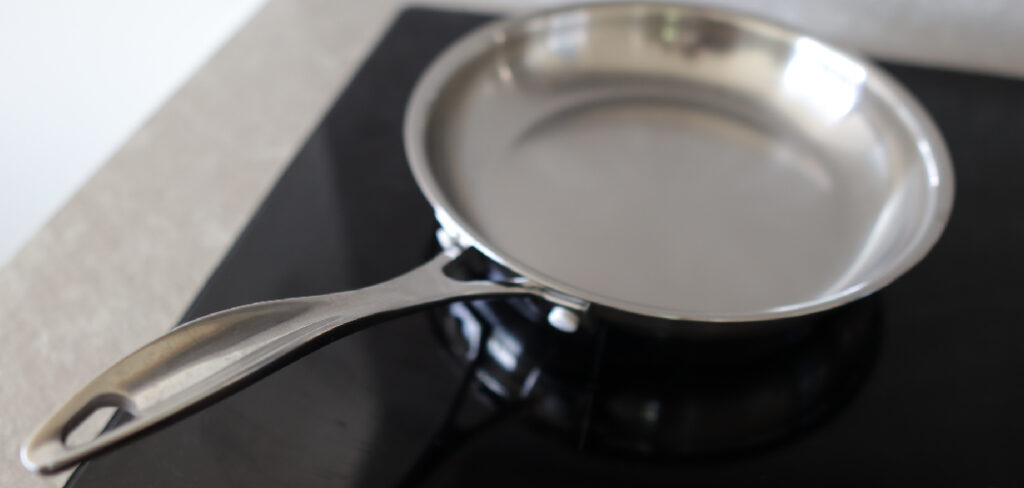
What Is Stainless Steel?
Stainless steel is a material that is made of iron, chromium, and other metals. It is an alloy that is rust-resistant and heat-resistant. Stainless steel is used in various industries because it does not corrode or stain easily. It is also easy to clean and sterilize. Stainless steel can be found in kitchen appliances, medical equipment, architecture, and automotive parts.
There are different grades of stainless steel, and each grade has different properties. The most common grades are 304 and 316. Grade 304 is mostly used in kitchen appliances because it is the most corrosion-resistant. Grade 316 is mostly used in medical equipment because it can withstand higher temperatures without losing its strength.
Why Should You Make Stainless Steel Nonstick?
When it comes to cooking, few materials can match the versatility of stainless steel. It is durable, easy to clean, and conducts heat evenly. However, stainless steel does have one major drawback: it is not nonstick. This means that foods can stick to the surface, making them difficult to clean and increasing the risk of bacterial growth.
Fortunately, there are now several ways to make stainless steel nonstick. One popular option is to coat the surface with a thin layer of polymer. This helps to create a smooth surface that is resistant to sticking. Another option is to use a metal-infused coating, which bonds with the stainless steel and forms a durable nonstick layer.
Whichever method you choose, making your stainless steel nonstick will help you enjoy all its advantages with none of the drawbacks.
How to Make Stainless Steel Nonstick Step by Step Guide
If you’ve ever cooked with stainless steel cookware, you know how frustrating it can be when food sticks to the pan. But you can use a few simple steps to make your stainless steel nonstick.
1. What You Will Need
If you want to make your stainless steel nonstick, you’ll need a few supplies. First, you’ll need a good cleaner. You’ll also need a primer designed for use on stainless steel. Finally, you’ll need some paint. A high-quality, food-safe paint will give you the best results.
2. Clean the Surface of The Stainless Steel
Before you do anything, it’s important to clean the surface of your stainless steel. Any grease or dirt on the surface will create a barrier between the pan and the coating, making it more difficult for the coating to adhere.
To clean the surface of your stainless steel, simply wipe it down with a damp cloth and some dish soap. Then, rinse the surface well and dry it with a clean towel.
3. Apply the Primer
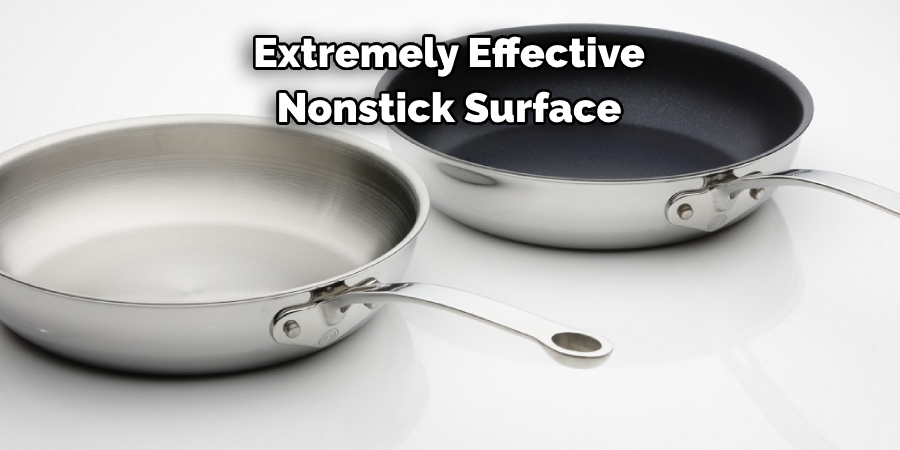
Once the surface is clean, it’s time to apply a primer. This will help the paint to stick to the stainless steel and create a smooth surface. Choose a primer specially designed for stainless steel or an all-purpose primer that can be used on both metals and plastics. Apply the primer with a brush or roller, following the manufacturer’s instructions.
4. Apply the Non-Stick Coating
Once the primer is dry, it’s time to apply the non-stick coating. You can do this with a brush or roller, but we recommend using a sprayer for best results. Apply the coating evenly and smoothly, making sure to cover all areas of the stainless steel.
5. Apply 2-3 Coating
After the first coat of paint has dried, apply a second or third coat, if desired. This will help to create a stronger barrier against sticking and make the surface even more non-stick. Let each coat dry completely before applying the next.
6. Let the Coating Dry
After you’ve applied the coating evenly to the surface of your stainless steel, give it time to dry. Depending on the coating you’ve used, this could take anywhere from a few minutes to a few hours. Once it’s dry, your stainless steel should be nonstick and ready for use!
7. Seal with A Top Coat of Sealant or Wax
Once the coating is dry, you may want to seal it with a top coat of sealant or wax. This will help to extend the life of the coating and make it even more nonstick. Apply the sealant or wax according to the manufacturer’s instructions.
8. Enjoy Your New Nonstick Surface!
After you’ve followed all of these steps, you’ll have a brand new nonstick surface on your stainless steel cookware that will make cooking and cleanup a breeze. Be sure to keep the following tips in mind to keep your new surface in good condition:
That’s it! You’ve now learned how to make stainless steel nonstick. With just a few simple steps, you can enjoy all of the benefits of stainless steel cookware with none of the drawbacks. So what are you waiting for? Get cooking!
You Can Check It Out How to Remove Rust From Carbon Steel Pan
The Benefits of Stainless Steel Nonstick Over Traditional Nonstick Surfaces
For many years, nonstick cookware was coated with polytetrafluoroethylene or PTFE. PTFE is an extremely effective nonstick surface, but it has some drawbacks. First, it can break down at high temperatures, releasing dangerous chemicals into food.
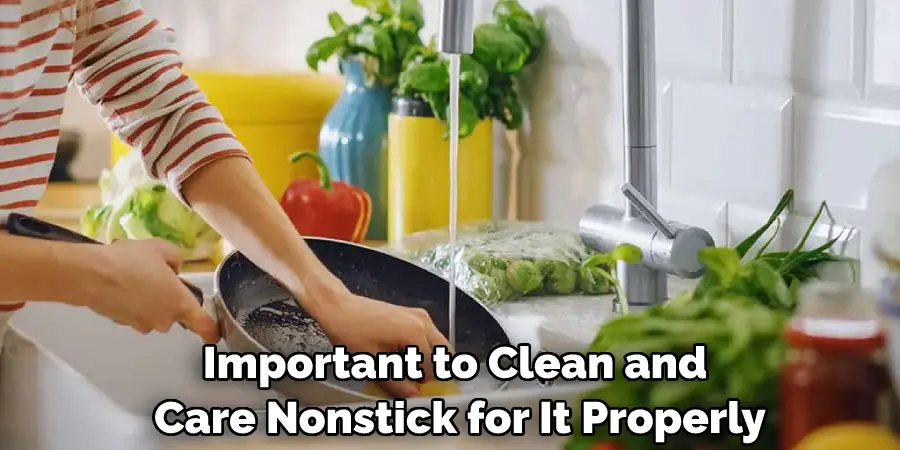
Second, it is not very durable and can easily be scratched or chipped. As a result, many people have turned to stainless steel nonstick cookware as a safer and more durable alternative.
Stainless steel nonstick cookware is made with a coating of ceramic or silicone. This material is much more resistant to high temperatures than PTFE, making it safer to use. In addition, the coating is much more durable and less likely to scratch or chip. As a result, stainless steel nonstick cookware can provide a safe and long-lasting way to enjoy nonstick cooking.
Tips and Tricks for Using Stainless Steel Nonstick Cookware
Nonstick cookware has become a kitchen staple in recent years, thanks to its ease of use and ability to prevent sticking. However, many nonstick pans are made with chemicals that can be released into food, making them less than ideal for health-conscious cooks. Stainless steel nonstick cookware offers a safe and healthy alternative, as it is made without any chemicals.
Additionally, it is durable and easy to clean. When using stainless steel nonstick cookware, it is important to use the right cooking techniques to prevent sticking. First, always preheat the pan before adding oil or food. This will help to create a barrier between the pan and the food.
Second, use a small amount of oil or butter when cooking. Too much fat can cause sticking. Finally, use a wooden or silicon spatula to avoid scratching the pan’s surface. With these simple tips, you can enjoy all the benefits of stainless steel nonstick cookware without any health risks. Keep reading for more information about how to make stainless steel nonstick.
Care and Cleaning of A Stainless Steel Nonstick Surface
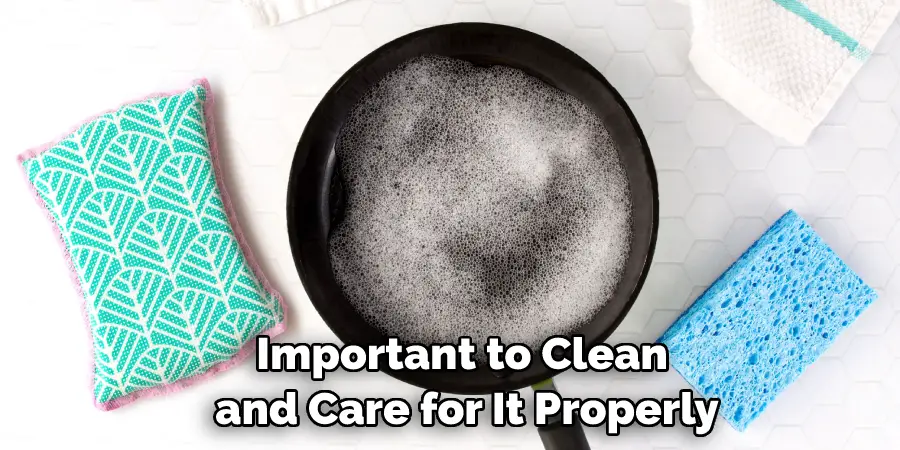
In order to keep your stainless steel nonstick surface looking new, it is important to clean and care for it properly. When cleaning, always use a soft cloth or sponge and warm water. Avoid using abrasive cleaners or scrubbers, as these can damage the nonstick coating. However, you can use mild dish soap if food or grease build-up is persistent.
For stuck-on food, let the pan soak for a few minutes before washing. When drying, use a soft cloth or paper towel to avoid scratches. If your pan does become scratched, don’t worry – this will not affect the nonstick properties. In general, avoiding harsh chemicals or cleaners on your stainless steel nonstick surface is best.
With proper care and cleaning, your pan will last for many years to come. Thanks for choosing Stainless Steel!
How to Choose the Right Stainless Steel Cookware
Stainless steel is one of the most popular materials for cookware, and for a good reason. It is durable, scratch resistant, and easy to clean. However, not all stainless steel cookware is created equal. When choosing stainless steel cookware, it is important to pay attention to the gauge or thickness of the material.
A lower gauge means that the cookware is thicker and will be more durable. Stainless steel with a higher chromium content is also more resistant to staining and corrosion. Finally, consider whether you want cookware that has a non-stick coating. Non-stick cookware is easier to use but may not be as durable in the long run.
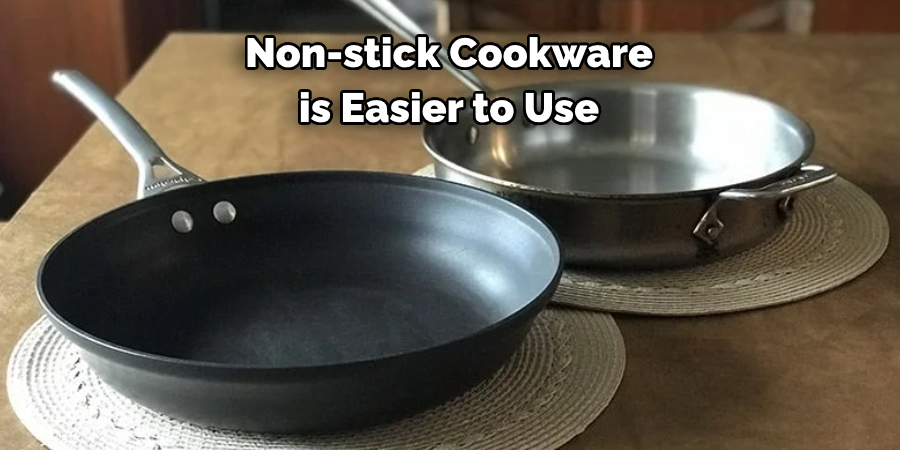
By considering these factors, you can choose the stainless steel cookware that is right for you.
Conclusion
Stainless steel cookware is a great option for those looking for an alternative to nonstick surfaces. While it may require a bit more effort when cooking with stainless steel, the benefits of this type of cookware make it well worth the time investment.
If you’re just starting out with stainless steel cookware, we recommend following these tips to help make your meals easier and less likely to stick. Thanks for reading our post about how to make stainless steel nonstick.
You Can Check it Out to Use Silicone Muffin Pan
Professional Focus
Angela Ervin, a former interior designer turned blogger, specializes in kitchen design and renovations. Through her website, she blends her passion for cooking with design expertise, sharing practical and creative ideas. Known for balancing functionality and beauty, Angela’s insightful content has made her a trusted voice in home design and lifestyle.
About the Author
Angela Ervin, an experienced interior designer and blogger, combines her passion for kitchen renovations with storytelling. Living in Petersburg with her family, she enjoys cooking and testing her projects firsthand. Known for her humor and relatable style, Angela shares creative, functional design insights through her content, making her a trusted voice in home design.
Education History
University: Virginia Commonwealth University
Degree: Bachelor of Fine Arts (BFA) in Interior Design
- Angela’s education at VCU focused on mastering core interior design principles, including spatial planning, color theory, materials selection, and sustainable design practices.
- She gained hands-on experience through studio projects and collaborative design exercises, which honed her ability to create functional and aesthetically pleasing environments.
- Her coursework also emphasized problem-solving and practical applications of design, preparing her for real-world projects like her self-directed kitchen renovations.
- The program’s strong foundation in both technical skills and creative expression shaped Angela’s ability to seamlessly integrate form and function in her work.


